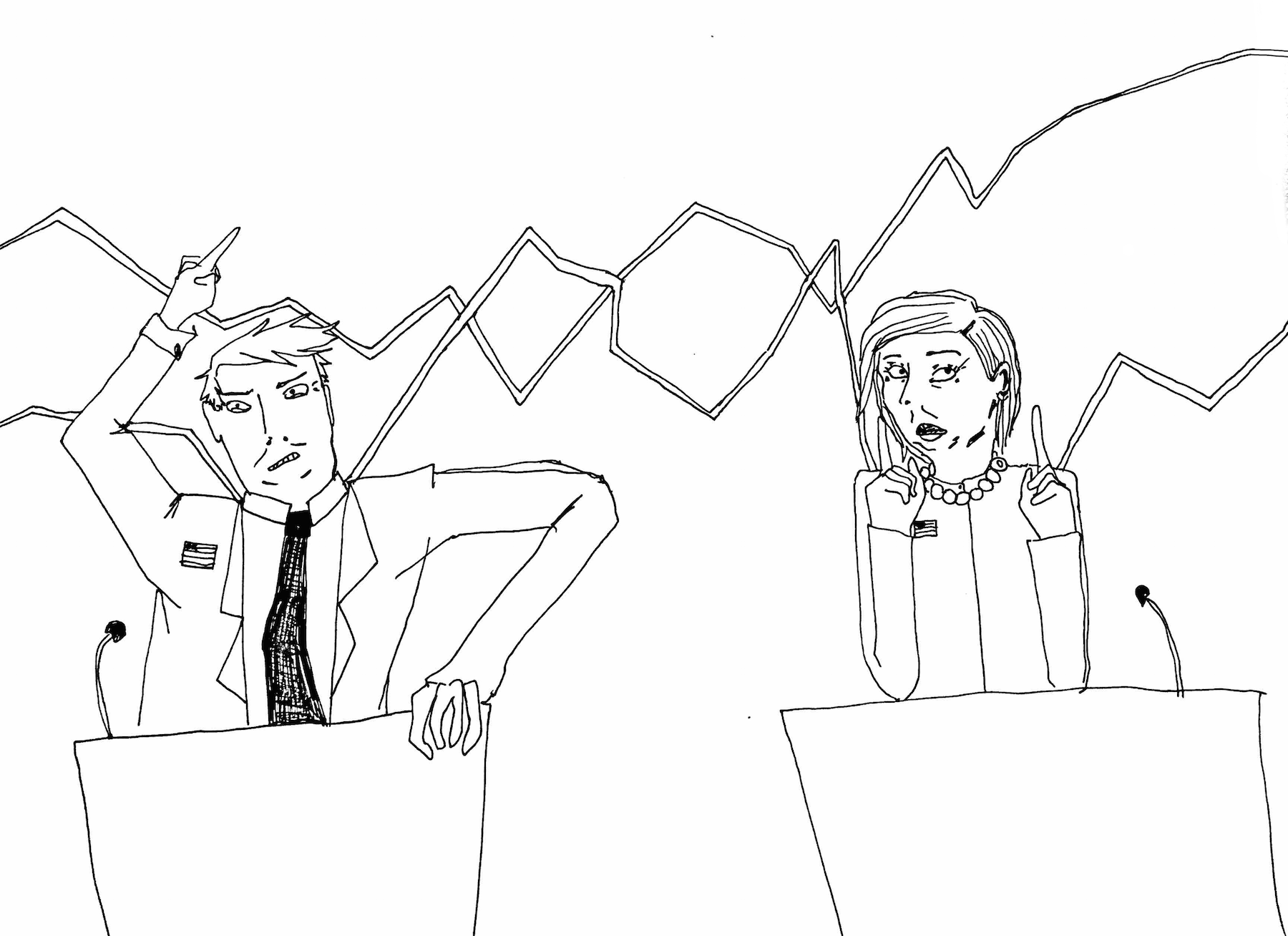When the New York Times reported that Hillary Clinton’s chances of winning were at 90 percent sometime in August, I felt a great sense of security.After all, Clinton is the only candidate running with a record of service and concrete ideas for the nation’s future.
But that 90 percent soon dropped down to 80, then 70, then somewhere around 40. “What the hell happened?” I thought.
Presidential polls are as confusing to understand and difficult to trust as Donald Trump’s take on foreign policy (which he sums up in four vague words: Make America Safe Again).
Clinton may have had double the chances of winning over Trump sometime last week, but today the polls report that Trump is gaining traction. As for next week – well, the polls will most likely read something completely different.
Presidential polls paint a vivid, yet inaccurate picture of the election: One where Clinton and Trump endlessly keep losing to each other in a boxing match presented by every major news agency.
Political polls are a necessary evil in journalism — the best way to try and figure out which presidential candidate has a higher chance of winning can easily help create enticing articles that draw readers in. Yet, the information provided in these polls creates an unrealistic representation of the presidential election — one where the candidates may be deemed a sure-shot winner one hour and a loser the next.
Furthermore, vacillating polls do a better job of confusing readers than helping them better understand the election process as a result of fluctuating numbers and information acquired through questionable means by pollsters.
Ever-changing polls make Americans — more specifically, people backing Hillary Clinton — seem indecisive.
For instance, when the Democratic nominee was diagnosed with pneumonia, her chances of winning dropped from somewhere near 100 percent to around 40 percent, according to the New York Times presidential poll. Trump’s chances of winning rose during the time.
However, did Democrats morph into Republicans during Clinton’s brief pause from campaigning? Probably not, so why’d her numbers drop so dramatically?
It comes down to random statistical variation rather than a shift in public opinion.
Even so, this random variation is likely a result of many errors — every poll has its associated margin of error which makes it difficult to truly declare who is in the lead.
The New York Times presidential poll, for example, reports: “Clinton’s chance of losing is about the same as the probability that an NFL kicker misses a 45-yard field goal.” She currently has a 71 percent chance of becoming the next president, while Trump stands at a low 29 percent.
The polls can easily make a reader assume that Clinton has this election in the bag. Not so fast – because the Times also reports, “A victory by Mr. Trump remains quite possible.”
The problem with polls comes down to how pollsters are obtaining the data necessary to create one by asking surveyees questions like, “Trump or Clinton?”
Many polls are determined based on land-line phone calls. Pollsters dial random numbers, try and get a response from whoever answered the call and determine results based on that.
According to an article for the Washington Post titled “The Problem with Modern Polling,” Reid Wilson writes: “Standard operating procedure in the industry requires pollsters to randomly select a set of survey respondents and call them repeatedly — up to six times — in an effort to get an answer.”
If the pollster failed in their sixth attempt to get an answer from someone with a land-line phone, only then will they attempt to call a new respondent.
But who uses a landline phone anymore? According to data from the National Center for Health Statistics, 41 percent of U.S. households didn’t have a landline by the end of 2013.
This leads to my next question: Who is picking up the pollsters’ persistent calls, then?
“Guess who answers the [landline] phone now? It’s all people over 50,” said pollster Bill McInturff in an article titled “The Problem with Polls” for magazine The Week.
This way of acquiring raw data for polls does an effective job of ignoring large segments of the population. As for the old-timers answering pollster questions — I doubt many of them are answering truthfully.
According to performance-management consulting company Gallup, 42 percent of Americans view Donald Trump unfavorably.
Therefore, with this much social disapproval for Trump, a down-low Trump supporter may be too intimidated to openly voice their support for a candidate who, for example, wants to ban Muslims from entering the United States.
Someone who says they’re “with” Clinton probably won’t receive much backlash — if any at all. I’m sure there are many secret-Trump supporting surveyees who don’t want to deal with the social grief that comes with vocalizing the fact that they share similar views with the Republican candidate.
The ineffective means of acquiring data by pollsters is taking its toll on the election.
Polls should be seen for what they actually are — insight into the minds of a few thousand Americans.
Unfortunately, until pollsters come up with more effective methods of acquiring the data necessary for polls, we’ll just be looking at an inaccurate representation of the current election through charts with blue and red arrows that fluctuate vigorously.




